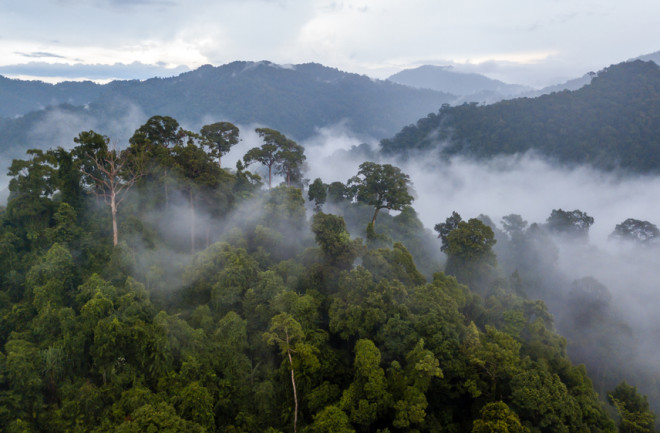A grand network of connected cities and villages existed in the Amazon for at least 1,000 years.
A new discovery reveals a thriving level of social organization in the jungle from roughly 500 B.C. to 600 A.D. that was very different from that of the Indigenous Americans who have inhabited many parts of the Amazon today.
“It’s really a fantastic archeological situation,” says Stéphen Rostain, an archaeologist with the French National Center for Scientific Research — a governmental institute.
When Were the Lost Amazon Cities Discovered?
Rostain has been working on this site since 1996, when he first heard that a priest in the area had discovered mounds and made some amateur digs in the Upano Valley — an area in Ecuador east of the Andes and near the Sangay volcano. Rostain worked there over the years, mapping out several different larger cities as well as some smaller settlements interspaced throughout the Upano Valley. He had found hundreds of mounds indicating some sort of platform or structure was buried beneath.
In 2015, the Ecuadorian government conducted a survey using Light Detection and Ranging (Lidar) — a technique used to map out ancient structures hidden under foliage and other softer materials. But the surveys were embargoed until 2020, when Rostain and his colleagues finally got a look at them. The maps revealed what he had been mapping out through fieldwork over the years — only his own estimations on the number of structures hadn’t captured the real scope of the site.
“I saw that there were some hundreds of mounds, but some thousands of platforms,” Rostain says. “The result was much more than I was expecting — we had a complete network of roads over the landscape connecting everything together.”
Read More: From Ruins to Ancient Farming, Lidar Technology Helps Reveal Ancient Societies
Who Built the Lost Amazon Cities?
Much remains to be learned about the people who lived in these jungle cities. The people were likely from the Kilamope and Upano cultures. It’s still unclear how many people lived there without further work, but Rostain characterizes it at least in the thousands. They didn’t leave any systems of writing, so really archaeologists only know them through what has been discovered at the sites so far.
Some of this is the pottery distinct to the area, characterized by lines and shapes. “The motifs are geometrical, triangular,” Rostain says, adding that the shape of many of the bowls was also unique.
There was evidence that they traded with other cities in the Andes to the west, where ceramics of this style have been discovered.
One thing that the Lidar surveys confirmed is the remarkable straightness of the roads — almost as if they were highways, Rostain says. These roads travel straight over dozens of kilometers, cutting through ravines and small hills in the area. The size of these roads is surprising, given that walking through the village — the only kind of transportation likely available to these people — would hardly have required more than jungle paths.
Instead, Rostain speculates that the long, straight roads weren’t for travel alone. “For me, these roads have a symbolic function to imprint on the landscape a connection between different cities,” he says.
Some Amazonian cultures in the upper Xingu River region in the Brazilian Amazon also have large roads they use to make processions to visit their neighbors. He’s not sure if these roads served a similar purpose, but they might have been connected with some sort of ceremony.
These roads connected five major settlements and 15 smaller secondary settlements. “The density is incredible,” Rostain says. “It’s a real discovery.”
These include some platforms that were about 50 meters long and 10 meters high. The size indicates they were likely used for some sort of civic function rather than ordinary houses — perhaps a temple, even, Rostain says.
Read More: The Migration of Ancient Indigenous People in South America is a Complex Tale
What Happened to the Lost Amazon Cities?
Whoever was there, the game ended rather abruptly. Many of settlements there are covered in a thin black layer suggesting burning or an eruption. Of all the remains the team has dated so far, nothing is more recent than 600 A.D. — roughly the time of the date of the black carbon.
“We have a brisk, sudden abandonment of the site — a destruction of the settlement,” Rostain says. He can’t be sure about what caused this abandonment — the lack of a similar black layer in nearby areas seems to rule out the idea that a larger volcanic eruption from Sangay caused massive regional destruction. But it’s still possible that smaller volcanic activity chased away the residents of Upano Valley.
Other factors also may have played a role like climatic changes due to strong El Nino shifts or an implosion due to political or social factors. Some of these questions may be answered by future research — not a lot of people are currently working on these sites.
“We need more excavation,” Rostain says.

